Water Expert Panel Discusses Causes and Implications of California Drought
California’s severe drought is forcing the nation’s largest state to reconcile old assumptions about water supply and management with the reality of long-term drying trends, declining groundwater, and polluted drinking water, according to an expert panel of scientists and journalists convened during a Circle of Blue interactive drought briefing conference call on February 13.
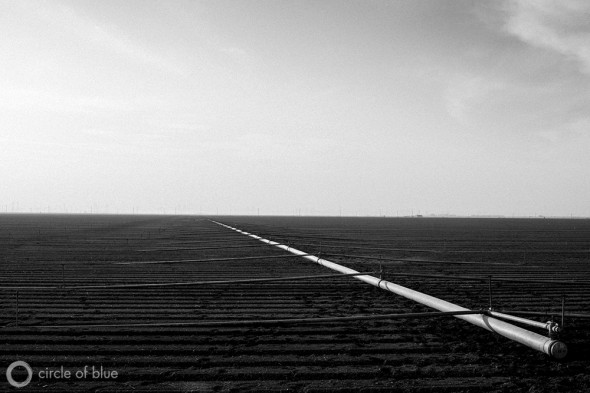
Speaking a day ahead of President Barack Obama’s visit to Fresno, the drought’s epicenter, the Circle of Blue panel stressed the need for stakeholders to transcend debates about water allocations and achieve an all-too-rare goal in United States resource policy – making the case to farmers, business leaders, elected officials, and water managers to work together to address the underlying causes of the crisis even after drought conditions abate.
Major points expressed during the conference call include:
- California’s drought, now in its third year, is exemplified by a Sierra Nevada snowpack that is currently 25 percent of normal, reservoirs levels that are only 20 to 35 percent of normal, and major rivers that are currently running at less than 25 percent of their normal flows. It is unlikely storms will replenish the water systems before the end of the wet season in April.
- Groundwater supplies are being drawn down during drought years much more quickly than they are being replenished during wet years. California’s total water storage is at an 11-year low. If the drought continues groundwater levels in the Central Valley will likely reach historic lows.
- Studies of California’s historical climate suggest that the past century has been much wetter and seen less climatic variation than earlier periods, when droughts were more frequent and could last decades. Current conditions are likely a combination of natural long-term drying trends and man-made climate change.
- On the ground, the drought is prompting some communities to look into water transfers, water markets and groundwater resources. Coping mechanisms may only work in the short-term.
- Low-income communities are some of the hardest hit by the current drought due to isolated water supply systems, contaminated water supplies, and the cost of securing safe sources of water.
The drought in California has recently become the most prominent display in the United States of the confrontation between water, food and energy in a time of changing climates and growing population. Circle of Blue’s reporting has found similar scenarios playing out across the globe from Mongolia to China to India to Australia to the Arabian Gulf. Most recently, in its Choke Point: Index project, Circle of Blue combined on-the-ground reporting with science and data analysis to examine the precarious condition of water in three iconic farming regions of the United States, including California’s San Joaquin Valley. The other two are the Great Lakes and the Ogallala Basin of the southern Great Plains.
“The drying conditions in California are being mimicked all over the world where we are reporting from,” said Keith Schneider, Circle of Blue’s senior editor. “The same water supply and transport networks that irrigate the world’s food and grain and protein bounty also encourage production practices that cause waste and foul the rivers and lakes of the world, and are using enormous amounts of fossil fuel energy. The same intense energy and focused national interest that built the water and food supply networks are not being matched by the intensity of how to respond to these changing conditions.”
Thinking about long-term responses to changing climate conditions in California during non-drought years is just as important as finding solutions when conditions are dry, the panelists stressed.
“I think society as a whole needs to be educated about water’s vital importance and its scarcity, understanding that water and climate are extremely variable in this part of the world,” said panelist Lynn Ingram, a paleo-climatologist and professor at the University of California at Berkeley. “We need to work on long-term solutions, because we’re going to have wetter and drier periods, and we can’t just forget about the dry periods as soon as we have a few storms.”
The discussion continues — join in on Twitter by contacting @circleofblue, or e-mail index@circleofblue.org.
— Codi Kozacek, Circle of Blue
Conference Call Transcript, February 13, 2014
Transcription by Ashleigh Lauren Hall
J. Carl Ganter, Managing Director, Circle of Blue

I’m J. Carl Ganter, director of Circle of Blue. Today we’re going to explore California’s water situation. As most of you know, Circle of Blue is the leading platform for original frontline reporting about the growing competition between water, food and energy globally. We like to ask big questions and spot important trends. We like to be on the ground with the best traditions of journalism, science, and data collection to understand some of the world’s most complex stories. Recently we reported extensively on the water-energy challenge in the U.S. through Choke Point U.S. And then in China, India and Mongolia through partnership with the Wilson Center’s China Environment Forum. We’ve just released Choke Point: Index. It’s an in depth exploration of the competition between water, food and energy in a changing climate. We look at three key regions in the U.S.: the Great Lakes, Ogallala Aquifer and California’s Central Valley. These reports and thousands of other pieces are on our site at www.circleofblue.org.
We’ve had support from the Rockefeller Foundation, the Wege Foundation, the Alpern Foundation and our partners at the Columbia Water Center, Wilson Center, University of California, Qlikview, Google Research and many others. Maestro Conference is providing the platform for this call.
We’ll start with our senior editor, Keith Schneider, who has covered this story for us around the world. He’ll give us an overview of recent findings. Keith will be followed by Dr. Peter Gleick, president of the Pacific Institute and member of the National Academy of Sciences. And then we’ll hear from Dr. Jay Famiglietti, director of University of California Hydrological Research Center and lead on the NASA Grace Satellite efforts to map ground water. Jay will be followed by Dr. Lynn Ingram. She’s a paleo-climatologist and author of the book The West Without Water. We’ll hear more about the on-the-ground situation from Laurel Firestone, attorney and co-executive director at the Community Water Center in the San Joaquin Valley. We’ll also have a cameo appearance from Circle of Blue photographer, Matt Black. You’ll see Matt’s stunning work atwww.circleofblue.org and www.mattblack.com. We’ll also be joined by Circle of Blue reporters, Jeremy Miller and Brett Walton.
Let’s get started. On one of our last calls, Keith Schneider was dialing in on assignment from a pay phone from Inner Mongolia. This time he’s home in northwest Michigan. Keith, take it away.
Keith Schneider:

Thanks, Carl. Welcome, everybody. The idea of this call is to provide a briefing on the situation of the drying conditions in California. The structure of the call will be this way: The first 40 minutes we’ll hear from Peter Gleick and Jay Famiglietti, then Lynn Ingram and then from Jeremy Miller and Brent Walton. The second section is 30 minutes of questions and answers from the panel. The third section we’ll hear 10 minutes from Laurel Firestone and then Matt Black. The last 10 minutes we’ll take more questions.
Let me just briefly sum up what we’re finding at Circle of Blue. The drying conditions in California are being mimicked all over the world where we are reporting from. The same water supply and transport networks that irrigate the world’s food and grain and protein bounty also encourage production practices that cause waste and foul the rivers and lakes of the world, and are using enormous amounts of fossil fuel energy. Those same intense energy and focused national interest that built the water and food supply networks is not being matched by the intensity of how to respond to these changing conditions. That’s the situation in California. California faces not only scarcity of resources but scarcity of the capacity to respond with the energy and with the timeliness needed to respond to this developing emergency. I think that’s what you’ll hear from our panelists.
First up is Peter Gleick. He is the president and co-founder of the Pacific Institute in Oakland. I ask all the panelists to introduce themselves again for those on the call. Peter.
Dr. Peter Gleick:

Good morning, everyone, or I guess good afternoon to those of you who may be on the east coast. What I’m going to do is give a little bit of an overview of California’s water situation without a drought. And then talk a little bit of what we know about the current drought and where we are. And then later in the call I think we’ll have some conversations about what the implications of the drought may be. Let me start with a quick overview for those of you not that familiar with California’s water. California gets much of its water in the north part of the state, much of its water in the mountains. Our rainy season extends from October to April. We have what’s called a Mediterranean climate.
From April to October, it’s pretty dry here. Yet the biggest demand for water in this state is during that dry summer period – primarily when we’re growing extensive food in the Central Valley. Because of that characteristic of water in the north, water in the mountains, and demand in the south and demand in the coast, we’ve built extensive infrastructure. We have a very complicated set of federal, state and local projects that collect water, distribute water from one part of the state to another. There’s a lot of local ground water that’s used. I know that we’ll talk extensively more about ground water. That’s the nature of California’s water situation. Seventy percent to 80 percent of all the water in California goes to agriculture, to irrigation of agriculture.
The other 20 percent of the water that humans use goes to public supply: to domestic, residential, commercial, industrial, institutional uses of water. That 80-20 split has been true for much of the century and actually it’s similar to much of the rest of the world. But it also dominates a lot of the debate about water. Trends in recent years suggest that in fact we’re getting more efficient over time. There’s not been a big increase water used in California in the last 10 or 20 years even though population has grown and the economy has grown. In fact, per capita water use has dropped in the last 10 or 20 years because of improvements in efficiency. The allocation of water from one user to another has stayed pretty much the same. This 80 percent – 20 percent agriculture to urban has stayed pretty much the same over time as well.
We’re in a drought. There’s absolutely no doubt about that. If you define drought as not having as much water to do the things we want as we would like. It’s a natural drought. We’re having a very, very dry year. We’re having a dry year on top of two previous dry years. It’s dry measured by almost any way you could think. The amount of precipitation we’ve gotten, the amount of snow that’s in the mountains, the amount of water that’s in our reservoirs, the amount of water that’s in our soil moisture. By all of those measures, it’s dry. Just to give you a little bit of an example of this, the two major rivers in California, the Sacramento and the San Joaquin Rivers, they drain the Sierra Nevadas and they join in what’s the called the Sacramento-San Joaquin Delta, south of Sacramento.
That’s where most of the water deliveries in the state of California originate, that’s where the aqueducts take water out and move water to Central California and Southern California. In a normal year, the Sacramento River and the San Joaquin River produce about 24 million acre feet of water per year. At the moment, the data suggests that the Sacramento River is running at about a quarter of normal – 24 percent of normal. The San Joaquin River is running at 10 percent of normal. That’s one of the measures that shows how bad the current situation is. We also depend enormously on snow pack. Much of our precipitation comes in the winter – as I have already mentioned – it falls as snow in the mountains. The best estimate of current snow pack is about 25 percent of normal. It’s up a little over that last couple of weeks because of some storms we’ve gotten, but we’re still at about a quarter of normal snow pack. That’s another indication of how bad the situation is. Our reservoirs are at 20 to 30 to 35 percent of normal as well.
We’ve drawn down the reservoirs over last several years. That continues to be a worry for deliveries of water. Some of you may have heard that the State Water Project last week or so announced a zero delivery allocation to some of its users for the first time in its 55 year history or so. That means water users south of the delta are going to get zero deliveries for some of those users. The recent storm helped a little bit. We got a big storm recently, but we’re still in a very deep hole. As I said, our snow pack is 25 or 30 percent of normal. It’s a big boost from a few weeks ago, but it’s still a big hole. There does not seem to be – let me put it this way – it is extremely unlikely that we’re going to get enough additional storms between now and the end of the wet season, which ends sometime around April, to fill the deficit.
I will note that the impacts of the droughts are going to vary from region to region. We’ll hear more about this later. Parts of southern California actually may be in a little better shape than parts of northern California – partly because southern California gets water from the Colorado River as well. The Colorado River is not going to have a cut in allocation this year. There will be a full delivery to California of its Colorado River compact allocation this year. That’s not going to be true for much of the rest of the state.
Categories of Impact
Finally, just a quick comment about categories of impact – and we can come back to this – the impacts for agriculture, there are going to be cutbacks for the deliveries for agricultural users and there’s going to be land fallowed. We’re going to see impacts on ecosystems, in particular on fisheries and fishery health. We’re going to see impacts on urban systems as well. We’re already seeing a range of mandatory and voluntary cutbacks in different urban systems in different parts of the state. There are some urban systems or rural systems that are really running short of water – either because they’re dependent on a single source of water – a single source of ground water or a single stream that may be drying up – and there may be some emergency responses required for some of these small urban systems. I know Laurel Firestone will talk more about those later. I’m going to stop there. We can come back and answer specific questions later. Thank you very much.
Keith Schneider:

Thank you, Peter. For those of you joining a little late, this is a special Circle of Blue conference call exploring California’s water situation. Now we’re going to hear from Jay Famiglietti. He is an earth systems science specialist, and he’ll talk about one of the responses to ground water use and scenarios for consumptions. Jay?
Dr. Jay Famiglietti:

Thanks very much. Thanks, Peter, for that great summary. I’m Jay Famiglietti. I’m a hydrologist. I’m a professor at UC Irvine. At the UC Center for Hydroelectric Modeling we use satellites and develop computer models to track how fresh water availability is changing around the world, around our country, and of course, in California. In contrast to some of the details that Dr. Gleick just presented, I want to give you more of a bird’s eye view from space, using date from the NASA/GRACE – or Gravity Recovery And Climate Experiment Satellite mission. This is a mission that we’ve been working with since the 1990s, actually well before it launched in 2002, to develop and to test methods to help monitor ground water depletion from space, which is a bit challenging when you think about it, because it’s underground. We have applied them around the world – not only in California, but across the U.S. and the Middle East, in Africa, in East Africa and Amazon River Basin, in India and many other places around the world.
The good news is that the methods work pretty well. The GRACE mission functions like a giant scale in the sky, more or less weighing how various regions of the world are gaining and losing water each month. We can start to see now the ups and downs of total water storage – that is, all of the snow, and surface water and soil moisture and ground water – like never before. That’s the good news.
The bad news is unfortunately in many parts of the world, especially in the arid and semi-arid parts of the world, we are running out of ground water, and that certainly holds true for big, big swaths of California, particularly the southern half. When we combine these satellites data with observations on the ground – for example, with measurements of snow and reservoir storage and soil wetness, and things like stream flow and ground water levels from the Department of Water Resources, from the USGS – we get a pretty clear picture of how our statewide water availability varies over time. It’s a picture – the satellite view that really we’ve never had before. At the same time, it’s compelling and also disturbing. During drought, we hit our ground water supplies very hard, mainly because we have to. The losses are so great that there are actually registered by the scale in the sky. They actually tip the scale, which is, by the way, about 400 kilometers out in space.
Our latest GRACE data, which we just released in a report last week, and actually just updated yesterday, show the following: In the last couple of years, California has lost over 25 cubic kilometers of total fresh water. That’s all of the snow, the surface water, the soil water, and the ground water combined. Really it’s an integrated measure of the state’s water health. To put that in perspective, each year that is more water than all Californians use for domestic, municipal, industrial use. That’s basically everything else besides agriculture and the environment. In fact, the greatest data now clearly shows that our total water storage is at an 11-year low, so that’s the lowest it’s been since the Mission’s started collecting data in 2002. They also show that during the last drought, the 2006-2010 drought, the Central Valley lost about 20 cubic kilometers of ground water, when surface water allocations were cut way back, but interestingly, not as much as the current state water project cuts and perhaps the central valley project cuts. And they will be in shortly.
It’s no secret that we’re depleting our ground waters in the Central Valley. We’ve been doing it for a long time, for decades, for nearly a century. And the signs, in the form of land subsidence, falling water tables, wells running dry, they’ve been there right along. One of the powerful things about the GRACE Mission is that it can, relatively easily now provide a valley-wide view of how the ground water supply is changing on a monthly basis. It’s a view that very nicely compliments the network of wells that the USGS and the Department of Water Resources and other local and state agencies have on the ground.
When you combine our GRACE data with those well data, we see a very distinct pattern that emerges. While there’s some replenishment of ground water during wet years, ground water levels decline precipitously during drought, when farmers have little choice but to rely more heavily on ground water to meet their irrigation water needs. When we track the storage changes over time, we see a little bit of replenishment, a little upward tick in the ground water levels, and then a big downward decrease, and then a little increase in the next wet period, and then a big plunge. Historically, the downs have been way bigger than the ups, which means that the ground water levels essentially are on a one way trip to the very depths of the bottom of the Central Valley aquifer system.
If we go back to the early 1960s we see that the Valley has lost, conservatively, over 80 cubic kilometers of ground water, which is about two and a half times the volume of Lake Mead. We shouldn’t be embarrassed about this – what’s happening in the Valley – it’s not an anomalous behavior in the United States – or anywhere really. But, we need to recognize it. And we need to confront it. We need to take steps to modify it, because ground water is a finite resource. Where are we right now? As Dr. Gleick mentioned, the drought is worse than ever. The state water project allocations are at zero. The Central Valley project allocation will be announced soon. Given how much depletion we’ve had in the past, during droughts and with cuts that weren’t as bad as the ones that we’re now facing, unless we take the required steps to manage our ground water resources in the central valley and in other places around the state, I think that we are poised for our next great epic of ground water depletion. If the drought continues, we will see valley-wide ground water reach historic lows, and reach them pretty quickly.
One of the big problems of this pattern of ground water use is that it practically defines the term “unsustainable.” In my opinion, we need to admit that this pattern of water use, and ground water use in particular is in fact unsustainable. It threatens our state’s water future. We need to develop a plan to manage our ground water now, as a reliable resource for the foreseeable future. I honestly believe that without one, our state-wide water security, and with it our food and our energy and our economic security, are seriously threatened. With that, I will turn it back over to Keith.
Keith Schneider:

Thanks so much, Jay. For those who are joining late, this is a special Circle of Blue conference call exploring the drought in California. Next up is Dr. Lynn Ingram. She is a professor of earth and planetary science at UC Berkeley and she has a paleontological view of where this drought fits in history. Lynn, thanks so much for being here.
Dr. Lynn Ingram:

Thank you. I’m Lynn Ingram. I’m a paleo-climatologist and professor at UC Berkeley. I study the long-0term climate history in California and the West, and have summarized this in my book, The West Without Water. I and my colleagues have been accumulating evidence for natural climate variations from sediment cores, tree rings, and these natural archives that we have in the West. These records show that over the past 2000 years, the twentieth century climate is relatively benign and stable. We only had two multi-year droughts over that century, from 1928-34 and 1987-1992.
Yet it was during that time that all of water development, dams and canals were built, our population and agriculture expanded over that period. We’ve come to expect that our climate will be that wet in the future. Yet, if we look to the past over the last two millennia, we see that multiyear droughts, some extending over a decade, were more common, recurring every 30-90 years in the past. These past droughts were correlated to the negative phase of the PDO – the Pacific Decadal Oscillation – which is the phase that we’re in currently in the Pacific Ocean. What we see is that our water resources are highly variable and they’re intimately linked with sea surface temperature in the vast Pacific Ocean. If we look over this long period, we see that the stability of the past century may not continue into the future. Another concern from the past records is even longer droughts – we’ve seen longer droughts that have lasted longer than a century back during the Medieval Warm Period, 900-1400 A.D.
When globally we see warmth, we tend to see dryer conditions in the West. Of course, this is what we’re concerned about for the future, that we’re heading into a warmer period and it’s going to be dryer. What we’ve seen in the past that is during these dry periods, we’ve had increase wild fires in the west and the Sierra Nevada. San Francisco Bay and Delta were saltier. We had shifts in marsh vegetation. Lakes dried up. We see these impacts on the native populations. In California and the southwest, abandoned sites, as the native populations looked for in search of dwindling food and water resources. There’s evidence for violence and conflict and malnutrition. These past droughts did impact the native populations. Of course, we may be entering a drier period now, naturally. On top of this, this could be exacerbated by drying associated with human-caused climate warming. This is not just something that might happen in the future, we’ve already been experiencing increased wild fires, earlier snow melts, trends in decreasing snow pack. We’ve seen trends over the last four decades of the impacts of warming that is now occurring. We’ve got both things going on. We’ve got a natural cycle that may be going into drier conditions. We also have warming that humans cause, that may also exacerbate that.
Keith Schneider:

The next two panelists are two of our fine young environmental journalists here at Circle of Blue. We’ll start with Jeremy Miller. Jeremy is based in San Francisco and he prepared our incisive article on California’s lingering drought and pollution, which is in our Choke Point: Index package on the top of 99.198.125.162/~circl731’s Web site. Jeremy will talk to us about the kind of things he was finding out, how this drought is affecting people in their place. After Jeremy we’ll hear from Brett Walton. Brett’s based in Seattle. He’s in California today. He’ll be covering President Obama’s visit to Fresno tomorrow for us, and doing some other reporting in California. Brett is one of the fine young water reporters in America. He’ll be talking about how the drought affects places differently. First up is Jeremy Miller.
Jeremy Miller:

Thanks, Keith. I wrote the feature story for Circle of Blue about the Central Valley. The basic arc of this story was to trace California’s engineered water system from their source in the delta east of San Francisco downstream and to talk to an array of users that use that exported water in the Central Valley. Before I talk about the reporting, I wanted to start out with a little bit of the context of a lot of the reporting that you see about California water. One of the tendencies that reporters tend to fall back on are these oppositional positions: farmers vs. fish, Northern California vs. Southern California, urban vs. rural, environmentalists vs. industry, San Francisco vs. Los Angeles, and the list goes on. The problem with that sort of format is that the conflicts are sort of inevitable, but are built into the engineering of the water system. By choosing to focus only on those conflicts, you over-obscure larger overriding realities, which is that in this time of climate change, systems that are designed to move water from north to south are ailing, and in some cases crumbing, and not really working well for anyone within the system.
Beyond Smelt: A Fundamental Shift
The bigger story that I think needs to be addressed by reporters covering California water and water issues throughout the West is that water management across California needs to fundamentally change. There needs to be a wide-scale recognition of the larger context. That is the real story. Much of the reporting along with my reporting for Circle of Blue began in the delta, the place where the state’s two largest river systems combine. The Sacramento and the San Joaquin Rivers. The delta has become the epicenter of the water war within California. The one symbol that has emerged is the delta smelt, which has become a sad little caricature in the debate. One thing to get back to this issue of oppositional language within the reporting is the smelt shouldn’t be caricatured. It’s actually an indicator or a barometer of the dwindling water quality within the delta itself. The fate of the smelt speaks to the larger fate of the ecosystems of the delta, which speaks to the water quality for all the users across the state. This is not a political position. This a statement based on objective facts.
Groundwater: Drilling Deeper
One thing I also covered in the story was ground water, which Jay elegantly laid out the overriding situation. Right now when you drive through the Central Valley, you’ll look out into the distance and you’ll see drill rigs lighting the sky. In this state of drought, farmers with reduced deliveries are relying more and more on ground water. What this is doing, which Jay laid out, is causing, in places, subsidence, ground water is being drawn out across the Valley, particularly on the west of the Valley, which is the arid side. One of the ironies is that one of the places of subsidence is directly under the Delta–Mendota Canal – which is a key artery of the Central Valley project, the federally-administrated project. The subsidence has actually undermined pieces of the Delta-Mendota canal.
Subsidence is having this double whammy effect on this water system intended to move water from north to south. There are also other issues of farmers using water on the west side. The water tends to be saline, so farmers are taking a tremendous risk using this water over prolonged periods of time. Another of the under covered dimensions of this story that I talk about in my story is the impacts of ground water pumping and agriculture and the other crush of industries in the Central Valley on the water quality, ground water quality in the Central Valley. Not only is water being sucked away, but much of the water that remains is being badly polluted.
UC Davis released a report in 2012 that found that 250,000 people within two distinct regions within the Central Valley are at risk of nitrate contamination. Nitrates, as you probably know, are a byproduct of fertilizers from agriculture. Problems go far beyond nitrates. A few years ago, Los Angeles Assemblyman Mike Ang testified before the California Senate that as many as 8.5 million Californians, or roughly a quarter of the population, relied on ground water sources that experienced at least of five incidents of excessive contamination in a single year. As farmers and industries and cities are wrangling for this scarce water, basic human needs – I should back up and say that many of the small communities, rural communities within the Central valley relying on this contaminated water, several towns, and Laurel Firestone will talk more about this, along the eastern side of the central valley, some of these small farming communities have very rudimentary water systems that tap into this contaminated ground water, which is delivered unfiltered into homes. The bigger water wrangling is happening between farmers and municipalities, basic human needs aren’t being met, and the poor of the central valley are being forced to deal with the substandard water conditions.
Drought, a Common State of Affairs
The other thing that I think that needs to be in the reporting more, that’s being overlooked is what Lynn just talked about. This drought is undeniably bad, but drought is a common state of affairs in the West and in California. The Department of Water Resources, for example, has records saying the state has experienced nine bouts of serious, multi-year droughts since the beginning of the century. This emergency approach, this alarmist reporting ignores the long history of drought. It promotes solutions, temporary fixes to more fundamental problems that need to be addressed. Things are getting more complicated with climate change, and the state’s dwindling snow pack, the Department of Water Resources says the snow pack is expected to decline by 25 percent by the middle of the century. To reiterate, the future water reporting in California depends on people to move from the oppositional model, the inevitable conflicts in the water wars that in some ways are built into the system, but to begin to focus on the much more serous reality of the needs of millions of California’s water users, from the delta to the wealthiest farmers in the western parts of the central valley, to the rural poor on the eastern side of the valley, to the urban users in Los Angeles are not having basic needs met. The next phase of the story, the one journalists need to be reporting on vigorously, is not how we are reactively engineering water systems to meet our insatiable and growing demands, but how regulators, communities, industries and agriculture are perusing efficiencies and reengineering our demands to meet the demands of nature.
Keith Schneider:
Thanks, Jeremy. And now, Brett Walton, Circle of Blue reporter who’s in California.
Brett Walton:

I’m in Sacramento right now, and will be travelling through the state for the next week, taking a look at job effects. I’m going to talk more about what’s happening on the ground right now, and what people are doing to cope with the drought, and the short-term and long term effects it will have. First of all, we can think about drought in several ways. One of the ways is the about of rain that comes from the sky. As we’ve heard from several of the panelists today, this is an historical event, unprecedented in recent memory. The reservoirs are shrunken, the snow packs are at record lows. Another way to consider this thing called drought is the effect it has, and the consequences it has on peoples’ lives and livelihoods. This is where the drought will have widely different effects depending on where you are in the state. The state’s water system is a complex system of at least 400 different management agencies, and they all have different supplies and sources of water. There are irrigation districts, there are water providers, there are power and electricity providers that will be affected by this as they rely on hydro power.
First, we’ll take a look at food and energy and drinking water supply consequences. A lot of food effects on this will depend on the type of crop that’s grown. A lot of the food effects we do not know right now because we still have six weeks to go in winter. We can still have storms that come in that will change the water supply forecast. Farmers have not yet made planting decisions; the crops are not yet in the ground. Until that happens, we don’t really know what the effect on food prices will be, and varies on which crop you’re looking at. In general, USDA economists are saying that maybe a 10 percent consumer price index inflation for fruits and vegetables, but it’s not going to be anything catastrophic.
For power, electricity, it depends on the power source for the provider. There are some agencies that I’ve talked to, like the Tuolumne Public Power agency that gets all of its power from hydroelectric. This year the federal government estimates that California’s hydropower output from the federal dams will be 70 percent of average. The deficit needs to be made up with alternative power sources. Those are bought on the spot market, which means prices will increase. If you get all of your power from hydroelectric, you will see a significant rate increase for you electricity bills. Other power agencies have a mix of sources and more customers, so they will not see as great an effect on their rates.
For drinking water, the state has identified 17 systems that are at risk of running out of supplies in the next 60-100 days. A lot of these are very small systems, serving anywhere from a couple hundred to ten or eleven thousand people. Like Peter has said, they rely on a single source: one or two wells or a small creek. I’ve talked with one agency north of Santa Cruz, the Lompico County Water District, and they get water from two wells, and its back up system is a creek that has gone dry. It’s looking to the state for assistance to build a connection to a neighboring water district. Making a connection to a neighboring water district means they’re expanding its network to be more regional instead of local. That’s one of the ways that people are coping with this drought.
There are three main ways that agencies and water users in this state are coping. Water markets and water transfers are one way. Water conservation is another. And as we talked about, ground water is the third. So I’ll take these in order. The first, water markets: California has an extensive network of canals and pipelines and aqueducts to move water around, which makes the state a fairly good place to have markets, because you can send the water from willing sellers to willing buyers. That is an important cog in these really dry years, to send water to the most valuable crops and the most valuable uses. In general that would be the tree: for agriculture that would be almonds, pistachios, fruits, orchards, those types of tree and vine crops. Farmers who might have alfalfa, which will probably be fallowed and not planted this year.
It’s an unprecedented time for the California water market. Last year, in 2013, according to West Water Research, which does research on water markets in the West, the average price for water sold in the Central Valley was $170 per acre-foot. An acre-foot is a unit of measurement, it’s an acre of land submerged by a foot of water. $170 in 2013. This year, we’re already seeing bids up to eight times greater, so $1,300 for an acre foot of water, which is an outrageous, absurd, large price for water — something that analysts have never seen. The other thing with markets is that there might not be enough water to sell. There are plenty of people looking to buy, but not as many people looking to sell. From water conservation, this would be, mostly voluntary restriction, right now. A few places have put in mandatory restrictions. Here near Sacramento, the San Juan Water District is a couple miles to the east, it’s next to the Folsom Reservoir. Folsom Reservoir is the lowest in the state. It’s down at 27 percent. I was there yesterday, and you have to walk about half a mile on sand that used to be submerged under the lake to get to the shoreline now. The water district there is looking to cut demand by 40 percent and they’re looking at a combination of price increases and mandatory restrictions.
The third way to cope is ground water. We’ve talked about it before, and it’s the central back up source in times of drought. Everyone I’ve talked to across the state is looking to pump more ground water. The problem with this is that there’s not a wide base of knowledge about how much water these places have. I’ve talked to several districts who say the wells are dropping 12 to 20 feet per year, and that they do not know how much water they have in the ground. That is a short-term solution. As Jay has talked about, ground water levels continue to decline, and it can’t be a long-term solution to this problem. All of these effects, the short term coping mechanisms, they add up to this: The state and its water users, they have options to cope this year. They can manage their water supplies by using ground water, by conservation, by water markets to get through 2014. They’re setting themselves up for failure in the long run, and most of the people I’ve talked to say that if 2014 is as dry as 2013 was, there will be real pain and disaster next year, because some of these coping mechanisms do not have the capacity to continue on.
Keith Schneider:

Thanks so much, Brett. Before I turn it back to Carl to take questions, you all could hear just how complex and how deep this drought is, and the implications certainly for now and for the future. For those who are joining us, this is a special conference call from Circle of Blue to explore California’s drought. Carl?
J. Carl Ganter:

Thanks, Keith. Thanks, everybody. We’ve got a couple of questions. One is from Twitter, for Peter, regarding the 80/20 split. Where do non-agricultural plants and animals sit in these percentages? I think they’re talking about ecosystems. What’s left for the environment in these allocations?
Dr. Peter Gleick:

That’s a wonderful question. The 80/20 split, 80 percent for agriculture, 20 percent for urban, commercial, industrial, residential uses, that refers to the water that humans withdraw in California. There is water left in the system for natural ecosystems. You have to understand that before we were here, all the water belonged to natural ecosystems. There were big river deltas, and massive inland delta with a big flyway for the pacific flyway for birds. A lot of that natural ecosystem is now gone, largely because of these human withdrawals for water. Much of the debate in California in the last couple of decades has really been about how to restore some of these natural ecosystems that have been so badly devastated – the fisheries, the salmon fisheries, as I think Jeremy mentioned, the delta smelt, are simply a symbol of the damaged ecosystems from over the last century of development of the state. Especially during drought, we see growing pressure to take even more water from the systems to support farmers, to support cities and so on. That’s part of the indication that the current system is really not sustainable.
J. Carl Ganter:
I’m looking at some of the questions that are coming in online here. We have one from David Rose. “Are there any districts in California that already have ground water restrictions as in Nebraska?” Anybody want to take that one?
Dr. Peter Gleick:

Groundwater is both terribly unregulated in the state of California – anyone who can punch a ground water well can use ground water. That’s caused a lot of the problems that Jay Famiglietti talked about. Enormous overdraft, the inconsistent application of policy, to we don’t manage the surface and ground water together, and we know that’s unsustainable. We don’t have groundwater law the way Nebraska does, or even Texas does, ironically enough, or Arizona. But there are hints that we are moving in that direction. In places where ground water overdraft has really been terrible, where the users realize they are approaching what we call the tragedy of the commons, where they can’t keep over-pumping ground water without any regulation, there has been some attempt to what we call adjudicating ground water basins. There are a number of ground water basins in southern California that that are “adjudicated,” where the users have gotten together to say, look, alright, we’ll agree to monitor, to measure, to allocate the ground water withdrawals among the different users. But that’s still a rare case in California, a rare issue in California. I do think in the long run, we’re going to have to move towards a much more intelligent, sophisticated, adjudicated set of ground water management basins statewide.
J. Carl Ganter:
Thanks, Peter. A question for our full panel, or perhaps Jeremy. How much water is going to the fossil fuel industry? Will they see cutbacks at all? That’s a question nationally, but certainly in California in this drought situation.
Jeremy Miller:

It’s a great question, and it’s a difficult one to disentangle. I’ve done some reporting on this issue for Circle of Blue, in fact, a couple of years ago. The answer is that it’s difficult to tell because as the laws are set up in California, oil companies aren’t forced or haven’t been forced to disclose sources of water that are used for a process that’s been in heavy use in the southwest part of the San Joaquin Valley called steam-flooding, which is a process where water is converted to steam pumped into the ground, and that reduces the viscosity of heavy oil, forces the oil to come to the surface. There are hints that that might be changing with SB-4, which is the new law overseeing hydraulic fracturing, although one conspicuous piece of the new law is that steam-flooding operations aren’t in fact included in that. New hydraulic fracturing uses a process that’s related to steam flooding in that chemicals are injected at high pressure underground. Water reporting will be a greater part of that. But as for the historic oil operations, it’s hard to say. The reporting that I did a couple of years ago found that one water district, a small water district albeit, in the western part of the valley, was allocating 85 percent of its water to steam-flood operations in the oil fields of west Kern County.
Dr. Jay Famiglietti:

There’s been a lot of discussion of fracking water use, and some numbers are beginning to emerge about that. They typically range from about 0.5 percent of a state of a particular state’s overall water supply to maybe 1.5 percent. While it sounds like it might be that much water, one of the things that we need to keep in mind is that use is often very concentrated in a specific region. It could end up totally taxing an entire small region’s water supply.
J. Carl Ganter:
Thanks, Jay. That’s great. We also have a question from Steven Moore, who’s raised his hand in the call, here. Steven, are you with us there?
Steven Moore:

A question about the Colorado River, and its imports into California from the Colorado River projected for 2014 and beyond, near term. Is there any projected relief from the Colorado River into Southern California?
Dr. Peter Gleick
By agreement with the other six states – there are seven states which manage the Colorado River – California typically gets 4.4 million acre feet of water a year. It looks like this year California will get its full allotment.

The Colorado is not a declared shortage situation. In fact that California will get a little more than 4.4 million acre feet a year. That’s one of the reasons why Southern California and some of the urban areas seem to be in a little better shape than some of Central California, and Northern California, because of that full allotment. We will not be getting full allotment from the state water projects within the state or the Central Valley Project, which is a federal project within the state. We do see in that sense some relief from the Colorado River, or at least in the broadest context, some relief in having a diversity of water sources available to us.
Brett Walton:

Carl, can I add just one more thing? Southern California, of all the places in the state, is in the best position. Reservoirs down there are relatively full. They did invest in new storage in the last 10-15 years, and in the wet 2011-2012 period, used that water to fill those reservoirs. Levels there are 80-90 percent capacity. Also, the Metropolitan Water District of Southern California voted this week to double its conservation spending budget. This would be the incentives, paying people to take out lawns or put in new efficient fixtures. They are going to double that budget from $20 million to $40 million over the next 2 fiscal years. They also have some ground-water treatment and ground-water replenishment and ground-water storage. In the short-term, southern California is looking fairly good.
J. Carl Ganter:

Thanks, Brett. Let’s get one more question in here, and then we’ll go to Laurel and to Matt. We’re getting questions, both online and with hands raised. Here’s one from Christopher Peacock via Twitter. It’s a big question for all of us, particularly in the news and science: “How do we engage those who don’t necessarily see or feel the drought?”
How do we make it visible? It’s that long-term question. Maybe we can get Laurel into the conversation on this one. You see it visible every day.
Laurel Firestone:

We work and have been working for years with communities and families, kids in schools that don’t have access to safe drinking water, and I think there has been some good reporting, telling these stories and showing those faces, and making it very real. It ultimately led in California to passing the Human Right to Water Act, which in 2012 stated it was a policy of the state that every human being has the right to safe, clean, affordable and accessible water adequate for human consumption, cooking and sanitary purposes. The reason that passed was not because everyone in California didn’t have safe drinking water was being impacted, but because they really saw the reality of those that were, and because the voices of those that were made visible, and were active in talking to legislators and engaging with the faith-based community and other stake holders. I’ll wait to go into talking more about the drought particularly for our communities, but there is very real impacts and important stories that need to be told.
Dr. Peter Gleick:

It was a really good question. The drought obviously highlights the sheerest challenges we have in the western US as a whole, and certainly in California now, because of unsustainable management of our water. It’s also true that when there’s no drought, it’s important to engage all water users and maybe the best way to engage them is to both communicate the nature of our water challenges but also communicate some of the solutions available. We know that we can do a lot more in terms of improving the efficiency with which we use water. We can do the things we want with a lot less water. That saves money and it saves water and it saves energy and it saves ecosystems. That message, even without a drought, resonates with a lot of people. If there are things that individuals can do to continue to do the things they want but save a those things, then that helps move toward sustainable water system. During a drought, it’s just even more important to communicate those messages. It’s not just a crisis, but there are these innovative, economic smart things we can do.
Dr. Jay Famiglietti:

I agree with my fellow panelists. There’s a lot of ways that we can engage the public. It’s quite challenging. One of the things that I fall back on is education, but from a little different perspective, and that is education of the sources of where one’s water comes from. I like to believe – perhaps it’s naïve – if we can let people know where their water is coming from, it’s coming from ground water, it’s coming from the Sierras, and also give them information about how that source is changing over time. For example, the snow pack is decreasing with things like climate change, and ground water is being depleted because of the reasons we have already spoken of, then I like to think that if people can trace the water from the tap back to the source, they will have a much better understanding of the need to use it wisely.
J. Carl Ganter:

Well said, Jay. And following on that, I think we touched on this, but here’s a tweet from Xylem, the manufacturer of pumps and hydrological systems, asking, “What can California learn from other arid, water-stressed regions, like Israel?” I always think, of course, of Australia, and we can probably do another full call on this. I think it would be interested to hear what we could learn from others. Maybe that could be a way to make this challenge more visible.
Dr. Peter Gleick:

That’s an excellent question. We are always trying to learn from other regions. I have to note that Circle of Blue has done some fantastic reporting from some of these other regions. Lessons learned from Australia from their millennia drought, which was even more severe than our current drought, and we look to some of those lessons to get some hints. There are some technologies and strategies for improving water use efficiency, and the example of Israel is a good one. Drip irrigation is spreading very extensively, and we’ve made progress in that area as well. Although there’s still extensive land area cultivation in California that’s not under better irrigation system that could be, and that’s an improvement that many of us hope to see in the coming years. There are lessons that can be learned in terms of economic strategies, technologies, regulatory policies and learning from the past is one of the challenges for us.
J. Carl Ganter:

Thanks, Peter. Lynn, we’re learning from the past. What about picturing the future? Is there a way of making this much more visible? It seems like, particularly in the media world, we’re concerned about deadlines and fifteen minutes, a hundred and forty characters, much less a thousand years from now.
Dr. Lynn Ingram:

In terms of learning from the past, like I was talking about, looking at the impacts of past droughts, on native populations and how they adapted in many cases. Obviously they didn’t have reservoirs and canals to the extent that we have. I think really understanding our climate variability. I think people don’t really have a full grasp of how extremely variable climate naturally is in the region. Water seems to be taken for granted. I don’t see it being valued in an area where it’s not that reliable, if you look over the long term. I don’t know if having restrictions on water use is something we’ll see. And maybe increasing the price of water are things that we can visit. People can start valuing more.
J. Carl Ganter:

It’s interesting. I’m on the World Economic Forum’s Global Agenda Council on Water Security. It’s interesting over the last five years we’ve looked at technology; we’ve looked at all of these “fixes” to the water situation. We’ve really settled on the obvious matters of governance and valuation. Valuation isn’t necessarily putting a dollar price on it; it’s that left brain/right brain – how do we actually value it and understand water. While we have a chance, too, I’d love to get – speaking of value and visualizing – I’d love to get Matt Black in the conversation and talk a little bit about his photojournalism. He’s one of our heroes in photography in the nation. His black and white pictures are stunning and I implore our listeners to take a look at the website at 99.198.125.162/~circl731 under the California section. Incredible work. I’d love Matt to take maybe two minutes and to walk us through some of the things he’s been seeing. He’s really dedicated his lens and his life to covering this story. Matt, can you do that for us?
Matt Black:

I’ve been photographing life in the Central Valley for about 15 years now, doing stories about immigration, agriculture. I’ve never really set out to photograph water, or particularly to be that interested in water until recent events have forced it to the forefront. The way it’s influenced these towns and these communities in the Central Valley is profound. I did some work on the last drought we had which was in ’08-’09, and that was too considered a crisis at the time. This time around it feels much more dire. The sense I’m getting from people is that people are really scared. It’s not just – I’m sure Laurel’s going to talk about this more, too – it’s not just agriculture, that’s what it often boils down to when they look at water in the Central Valley, its impact on farming and farmers which is a valid concern, of course, but it’s also the small towns, small farmworker communities that are really feeling the impact and rarely get their side of the story told.
It was wonderful in the Circle of Blue project to be able to talk about both sides and photograph both sides and see what unites – there often this oppositional approach to water and water reporting in California. I’m getting the sense that might be changing. I’m hoping it’s going to change. It’s all the same state. It’s all California. These are all neighbors in one sense or another. That’s the feeling that I’m hoping predominates here. The other thing, we’re still very much in the early stages of how this thing is going to play out. 2014 is going to be a tough year for lots of people. I’m hoping that some of these old saws of people vs. fish and these other dynamics — that that changes this time around, that we start to look at the Central Valley as a whole, and these communities as a whole, and to hear from all sides.
J. Carl Ganter:

Again, I would really implore people to take a look at Matt’s pictures, just because he photographs from the soul, and there aren’t a lot of photojournalists doing this kind of work today. I want to go to – we’ll go to Laurel here in a second – but we have a question from Brian Oborne, and Brian, go ahead. Ask your question.
Brian Oborne:
Hi there. Calling from up in Alberta, Canada. Just wondering if California is exploring alternative water supply sources just as desalinization? Some years ago there was talk of running some kind of anchors down the coach from British Columbia, and there are of course been the historical mega-projects involving canals and pipelines from other locations in Canada. Any thoughts on that from the panel?
J. Carl Ganter:
Thanks, Brian. Go ahead, Peter.
Dr. Peter Gleick:

That’s actually a great question. We talked a little bit about what I think is the enormous potential of improving efficiency in water use in California, looking at the demand side. Traditionally we’ve had long discussions on the supply side – how do we boost the amount of supply, build more reservoirs and tap water from further and further sources away. I think those options are really limited, but I think there are some new innovative supply possibilities that we’re looking at. For example, we produce probably 5 million acre feet of waste water in California, water that we use and collect and treat in waste water treatment plants, and we mostly throw that water away. We probably use about a little more than 10-15% of that water, but expanded use of treated waste water is a potential new source of supply that we’re exploring. There is some efforts to explore desalination. There’s one big plant that’s being built now near San Diego called Carlsbad. It’s going to be enormously expensive, even compared to other sources of new supply and expensive compared to saving water through conservation and efficiency. I do think that we will see, over the long term, an expansion in the use of desalination, if we’re willing to pay the economic and environmental costs of that. I don’t think we’ll see large transfers of water from other regions outside the state. It’s very expensive to move water around. Economically and politically, of course. Canadians are very sensitive to the idea we might move water anywhere from Canada to the United States. I don’t think we’ll see much of that. I don’t necessarily think that kind of option is necessary for us.
Dr. Jay Famiglietti:

I have one thing to add. In discussions about water policy with people around the state, I’ve heard claim that this is a drought now, but what California needs are policies that incorporate wet periods and dry periods. We’ve heard from Lynn and others today that California’s climate is variable; there are high flows of water, atmospheric rivers from the Pacific that dump inches and feet of snow into the mountains, cause flooding. So the new generation of water infrastructure that people are advocating for are not these massive transport schemes, but ways to make use of this local water, like recycling waste water, capturing storm water, putting it into the aquifers, moving back through to you have more of a closed local cycle.
Dr. Peter Gleick:

One way to solve our ground water problem is to much more intelligently recharge it during wet years. There’s some efforts underway to do some of that. It’s not going to do that if we have uncontrolled withdrawals at any time. Yes, smarter surface water and ground water storage and management is a great solution in wet years and dry years. It’s likely to be much more effective than trying to find another surface storage reservoir to build.
J. Carl Ganter:
Thanks, Peter. What I’d like to do is to go back to Laurel and pick up on the conversation where she can give us more of what she’s doing, what she’s seeing. Lauren?
Laurel Firestone:

Thank you. I have been based in Tulare County for the past nine years, working with communities that lack access to safe, clean and affordable drinking water. It’s those communities that are already hit and are going to continue to be hit the hardest by the drought. Communities, particularly low income communities in agricultural areas, but also small, low income communities in other parts of the state are already impacted.
Just in the past month or so, we’ve been hearing a lot from individual well owners, there are a number of communities that don’t have a centralized water system, so they’re on individual wells, whose wells have gone dry, meaning that they have no water at all in their homes. Because they’re low income, aren’t able to access, aren’t able to get loans to get new wells, and federal funding and state funding aren’t traditionally available to individuals. We expect to see a lot more of this this summer and as the drought continues. It’s already happening that communities, particularly those without a centralized public water system, are without water at all. In addition, communities are losing their water supplies not only in terms of wells running dry, but also because contamination and contaminated ground water is being pumped and concentrated because there’s a lot less recharge coming in, as was discussed.
That means that communities that had safe drinking water, but maybe only have had one or two wells to rely on to supply all of their drinking water, now will have toxic water coming into their taps, will have unsafe water coming into their homes and in their schools. I want to emphasize that the water quality impacts are just as real and vital to address in this as the water supply and wells running dry and subsidence and rivers running dry and all of these things. Certainly, access to safe drinking water is a fundamental human right; it’s also an essential for a healthy population, for the environment, for the economy. In California there are over 2,000 communities that are 100% reliant on ground water. There are about 420 schools that are purely reliant on their own ground water, versus outside the community source. These are really the most vulnerable to interruptions of their water supply, either from quantity or quality, by drought or contamination. In addition, there are about 2 million people that are not a public water system, so especially in rural areas there are a lot of communities that never got centralized systems, which are low income — many trailer parks, many farmer labor camps — that are the most vulnerable.
In the southern San Joaquin Valley – what we’ve called the Tulare Lake Basin – there are 158 community systems that are reliant on a single well, so if anything happens to that well, they are out of a source. There’s close to 200 communities that lack a centralized source. There’s a huge amount of vulnerability. I think the thing that I just want to emphasize is that the low income communities that are most impacted are nearby cities, they are the workers of our agricultural systems, and they are very much the canary in the coal mine indicator of a broader impact that is not only impacting communities but also the dynamics that are ultimately impacting cities. Whereas the city of Fresno can afford if a well goes out to compensate through their many other sources, prices of waters will increase and that will only last so long, depending on long this drought goes.
I think this is very much a canary in the coal mine situation. On a very human level, it means that you can’t live when you don’t have safe water coming out of your tap, or you have no water at all for basic sanitation, cooking, much less drinking. Many communities are having to travel many miles to get water, if they’re from rural areas, often having to find a ride, or pay for a ride or pay for bottled water or vended water, and to haul 5 gallon jugs. We’ve been looking at some of the solutions in terms of what’s needed. The two big things are making sure that we get some funding to the communities that need it most, including those on private wells that don’t have centralized sources, which is a really big challenge, but one that actually USDA has a program for private well owners that could be funded, and we would love to see that happen urgently. And that we’re developing solution that aren’t just Band-Aids, that are going to help fundamentally solve the problems, and I think Brett mentioned, particularly connecting small and isolated systems to neighboring water systems to create some reliability and stop the cycle of vulnerability that we see communities in, so that we can get ahead of this and not be hit time and time again.
J. Carl Ganter:

Great, thanks Laurel. Really appreciate that. Also, if you take a look at Matt Black’s work and our coverage there, Matt told a story about, there’s one water supply where the pipe crosses a small canal, and there’s a break in the pipe, and it sucks in tadpoles, and so when you turn in your tap, you have frogs leaping out – not quite leaping out, but tadpoles. I want to – there’s a timeliness here, and a news value to this story. President Obama is going to the Central Valley tomorrow. What are we expecting from that? Who’s been following that closest? Brett, I think you’re planning on being there, you’re covering the story. Maybe you could give us a little background, and then we can hear from Peter and the rest of our crew what we hope the President will say.
Brett Walton:

The President will stop in Fresno for a couple of hours en route to a meeting with the King of Jordan in Southern California near Palm Springs. I expect he’ll be talking about his climate change plan that he introduced last June at a speech in Georgetown. He’s been rolling out different components of his plan as small scale things that the President can do – advisory councils, efficiency standards, funding for different programs – over the last nine months since he made his announcement in June. I expect he’ll be talking about that, and I expect he’ll be talking about federal assistance that will be made available to California for drought – it’s about 20 million right now, mostly for farmers and for low interest loans.
J. Carl Ganter:
Great. What about – there have been some comments from John Boehner and Feinstein on water starting to make it back to Washington, particularly California’s challenge?
Dr. Jay Famiglietti:

I’ve been following that a little bit. There have really been two centers of activity. One is the Nunez bill that was just brought up in the House and passed in the House. The other is much more recent, it’s the Feinstein—Boxer Bill. They each have their debatable merits. The Feinstein-Boxer Bill is much more geared towards flexibility in being able to move water around more efficiently, being able to move money around more efficiently and quickly, making federal emergency funds available more quickly, and perhaps and if projects are shovel-ready, storage projects for example, being able to accelerate those. The House bill on the other hand, the focus is really on building storage within the Central Valley, keeping water in the Central Valley. In my opinion, it doesn’t really have a great benefit. I think the President already said he would veto it if it passed. It has become politicized. Water has a very strong political side to it, which is unfortunate. As many of the panel has said today, we do need to work together to try to satisfy the competing demands of humans, of the environment, for energy production, for food production. The only way to get there is to work together.
J. Carl Ganter:

Some of our comments on Twitter are saying some of the say things, that we have to work together very quickly. One is “people are scared”. Our friend at Northern California Utitlity says “don’t know what else to do; we’ve cut everything we can.” Another Twitter comment is “Texas needs to know how to navigate their water, too.” I guess that pushes us to even a more national conversation. Is this starting to rise on the radar, or this is something that is going to – pun intended – ebb and flow on the national scale?
Dr. Jay Famiglietti:

Maybe I’ll kick that off as well, Carl. We had a national scale paper come out in June where we looked at sort of the national scale the ground water issues. I think the places where it is – where water scarcity issues of course are getting the most attention are the places where it’s a problem. It’s a problem really in the southern tier of the United States, and in particular in our agricultural regions like the Central Valley and the Ogallala Aquifer, but also the south east U.S. is getting hit pretty hard. These are places that are paying a lot more attention than they would have in the past. Going back to our earlier discussion, getting people engaged, unfortunately, almost takes a crisis like the one that we have now. As soon as it rains a significant amount, even though as Peter said earlier, we have a huge deficit, a huge hole to fill, people lose focus, and so I feel for the water managers out there, and the water utilities, and the question of the person who stated I don’t know what else I can do – I feel for those people. It’s a very difficult job in very difficult times.
Keith Schneider:

I think this invites, to me, the larger context, which is global and national. We are seeing around the world deeper floods, deeper droughts, more intense storms. The Earth is pushing back very hard now. There are more people and flimsier infrastructure – water and energy transmission infrastructure — reaching deeper into places where we’re in harm’s way. That’s what is happening around the world. At the same time, simultaneously, nations, including the United States, are weakening their capacity, politically, to deal with these urgent crises. In the United States, our new politic is one of austerity, of disinvestment and non-collaboration. We have in the House of Representatives, proposals to close the government and defund the government at a time when we need more collaboration, more investment in new kinds of thinking, more investment in innovation. On the political front, it’s a mismatch. The Earth really doesn’t care. It’s pushing back hard, and we’re getting clobbered in the United States; the California drought is just one example. We’ve drowned two cities. We’ve had deepening droughts in Texas. We have ice storms in Atlanta that cripple an entire metropolitan region. Many of the same folks that are voting for this era of austerity, era of disinvestment, era of “You’re on your own,” when faced with an emergency, look to the community for help. Until we begin to address the reality of what’s happening on an ecological front in the United States, in the political sense, more people are going to get hurt until as a nation, we decide we need to work together. That, to me, is as equally important as what Mother Nature is doing. We have the capacity in the United States to respond. In fact, my reporting indicates that there’s no nation in the world that can respond as quickly and as aggressively and as innovatively and as smartly as the United States to these greatest and sundry threats. The question is when will we do that? And nobody is talking about that, politically.
J. Carl Ganter:

I’d love to hear if anybody has any closing thoughts, and then I’ll close out the call. I’ll remind people twice, first right now, that we want to keep the conversation going, on Facebook and on Twitter. We’re Circle of Blue. If you have questions about this or anything else that we’re doing, email index@circleofblue.org.
Dr. Peter Gleick:

Just a quick comment. I do think this is a developing story. If the drought ends next month, we’ll go back to our old unsustainable ways, and that will be a story by itself. If the drought continues, there may be some fundamental serious impacts, but also some fundamental changes that we should be discussing. Maybe those can be part of the future conversation.
J. Carl Ganter:
Great. Lynn, if you’re out in the future looking back, what did we do? How did we respond?
Dr. Lynn Ingram:

I think society as a whole needs to be educated about water’s vital importance and its scarcity, understanding that water and climate are extremely variable in this part of the world. We need to work on long-term solutions, because we’re going to have wetter and drier periods, and we can’t just forget about the dry periods as soon as we have a few storms. We may have an El Niño next year, and it may be wetter, but that doesn’t mean that we’re going to not be on a long term trend of drying. I hope that we can keep this issue alive and work on the kind of solutions that Dr. Gleick has talked about.
Dr. Peter Gleick:

I have to say that one of my favorite quotes is from John Steinbeck from East of Eden. He said, “It never failed that during the dry years, people forgot about the rich years and during the wet years they lost all memory of the dry years. It was always that way.” I guess in the long run the hope is that maybe we can change that.
Dr. Lynn Ingram:
I agree with that. I think if we’re going to survive into the future we have to overcome that tendency to forget what the climate was last year. To try to remember that these things are going to repeat. We can’t just deny that this is not going to happen in the future.
Dr. Jay Famiglietti:

I think that working with organizations like Circle of Blue that we as a community need to elevate these critical water issues to the level of everyday understanding. Then I think we can make a difference.
J. Carl Ganter:
Thanks, Jay. Laurel?
Laurel Firestone:

I think we need to make sure that it’s not just those with the most money and power that are heard, but that we actually talk to those that are hit the hardest. That tends to be low income and environmental justice communities that those stories that are the ones that need to be told and highlighted and make sure that our solutions address those, and that we’re creating the kind of state and the kind of community that we believe we should have, and ensuring basic human rights in our own backyard.
J. Carl Ganter:

That’s a terrific way to wrap things up. Well said. We’ll be hearing a lot more from Brett Walton and from Jeremy Miller and from Matt Black and from Keith Schneider, our reporting team here. Of course we encourage everyone to share their ideas for stories that we should be covering, breaking news, long term. That’s why we’re here. We really appreciate the great questions and the conversation today. We want to hear your stories and feedback, both on Facebook and Twitter. We’re @CircleofBlue. You can also find a lot of our callers’ Twitter IDs and Facebook pages online. We can post those access points. The email for Choke Point: Index is index@circleofblue.org I really want to thank Keith Schneider and Peter Gleick, Jay Famiglietti, Lynn Ingram, Matt Black, Laurel Firestone, Jeremy Miller, Brett Walton for sharing their perspectives and for being on the front lines of this story. We’re here in the Great Lakes and incredibly grateful for the water and particularly seeing the situation in other parts of the world first hand. Thanks to our reporting production team here at Circle of Blue that’s behind the scenes making the engines run and for the great reporting. Also, thanks to the Rockefeller Foundation for making Choke Point: Index possible, and Maestro Conference for providing the technology. It’s a very cool way of doing our own radio show, here. It seems these challenges are accelerating, and not necessarily getting better. It’s our chance to help define how the world responds and tell better stories. Let’s keep in touch. You’ll hear a lot more from us and I’m sure from our callers and participants real soon. Thanks so much.
Circle of Blue provides relevant, reliable, and actionable on-the-ground information about the world’s resource crises.

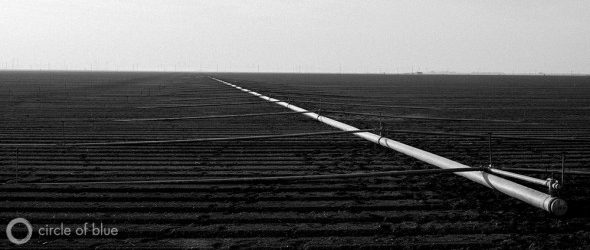
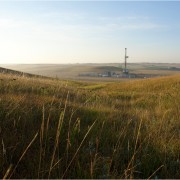
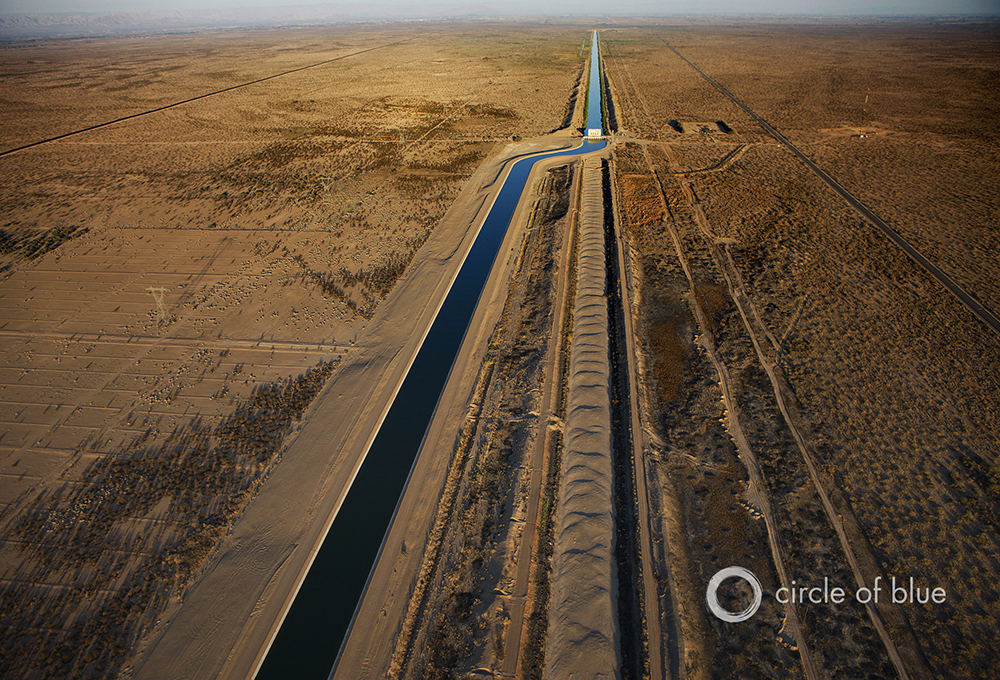
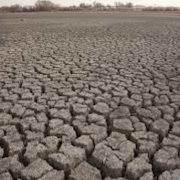
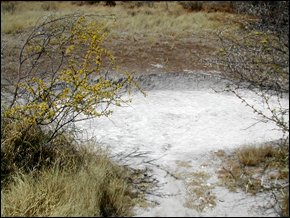
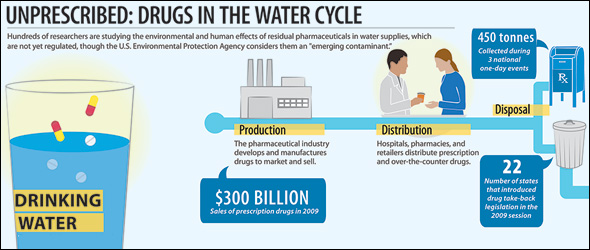
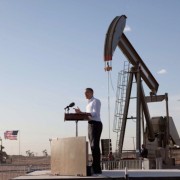



I think ‘change’ on the scale that is necessary requires emotional content that transcends boundaries of time and space and subsumes issues in a larger vision. The only people who are going to base decisions on education are the scientists and engineers making things work.